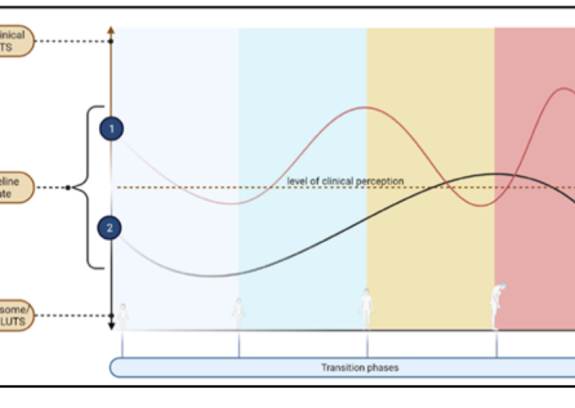Full version 9 min
[ OAB ]
Can a specified timeframe be applied to OAB?
Summary of the modified Delphi study proposed by Bou Kheir et al. Neurourol Urodyn. 2023;1–18.

The current definition of overactive bladder (OAB) by the International Continence Society (ICS) and the International Children’s Continence Society (ICCS) does not include a specified timeframe. This omission may limit our understanding of this condition as well as our ability to identify precise clinical profiles for OAB patients.
The concept of lifelong overactive bladder
The concept of “lifelong overactive bladder” has been put forward to address this issue. A three-phase, modified Delphi study was conducted to further develop and define this concept. The study involved 30 international experts in functional urology, urogynaecology, geriatrics, transitional medicine and paediatric urology, with regard to the subject. In addition to providing a definition for this concept, the study aimed to analyse its foundations, review the existing scientific evidence and assess the potential therapeutic and diagnostic implications.
Key findings
The experts reached a consensus on the definition of OAB: a continuous and persistent condition, with long-term implications for quality of life, mental well-being and social functioning, which develops from birth and evolves over time due to the influence of anatomical, hormonal and psychosocial/stress factors.
Three key transition periods were identified:
- the time when daytime continence is achieved,
- the transition from adulthood to elderly age,
- the transition to frail elderly age.
The experts highlighted the importance of these transition periods and the various effects they can have on the clinical presentation of OAB.

Schematic representation of the OAB lifelong concept, where the overactive bladder is regarded as a persistent and continuous condition. Its subjective perception by individuals may differ from birth (as represented by examples 1 and 2) and evolves over time. A threshold or level of clinical perception (dotted line) defines its subclinical or overt/bothersome in nature, this threshold itself may vary over time. Its course of evolution is influenced by modifying factors during transition periods.
As a result of this Delphi study, a new perspective for understanding overactive bladder has been proposed and developed, with the aim of further improving and personalizing care pathways for OAB patients.
Read the article here: https://pubmed.ncbi.nlm.nih.gov/38289322/
To access to the complete publication, please contact medical_information@pierre-fabre.com